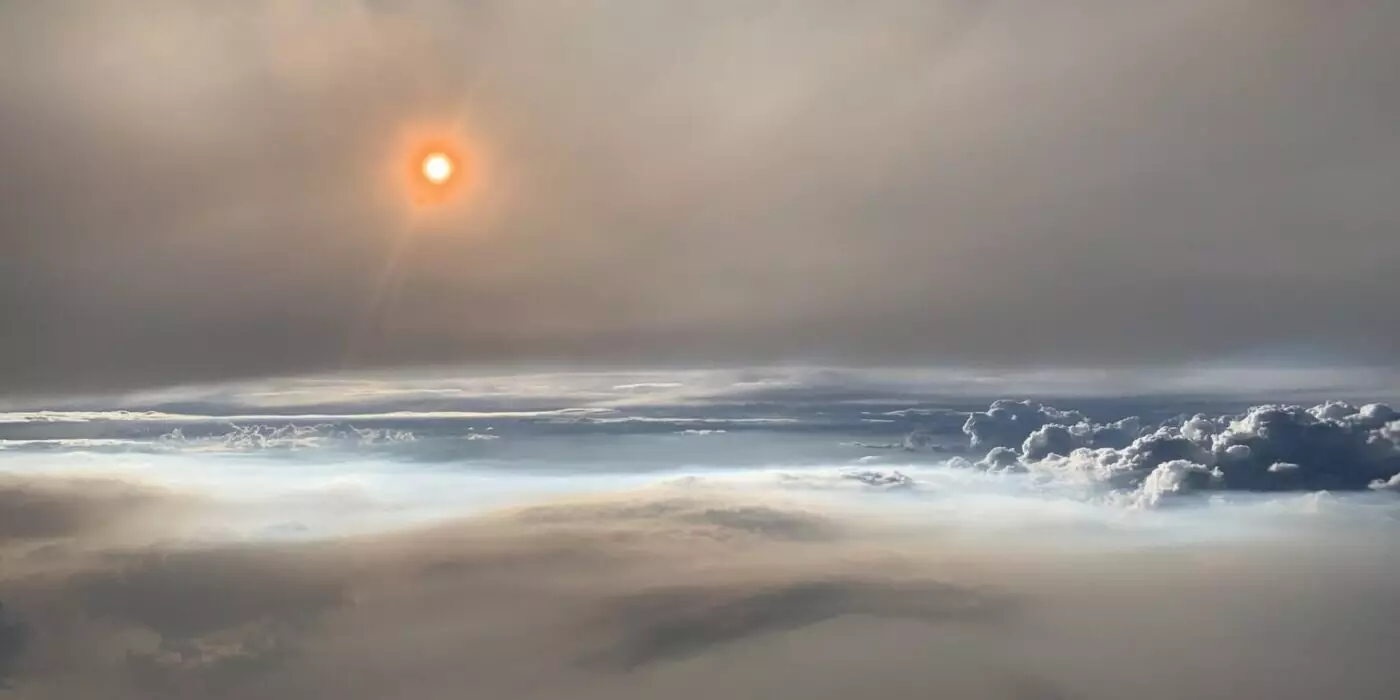As the climate crisis deepens, wildfires have escalated into a dire and frequent reality across the globe. The increase in wildfire incidents isn’t merely a statistic; it’s an alarming indication of the environmental impact humans have made. These infernos unleash vast amounts of smoke, contributing to an insidious pollutant: black carbon. Black carbon, a potent short-lived atmospheric warming agent, poses a significant threat due to its compelling capacity to absorb sunlight and subsequently exacerbate global warming. However, the comprehensive impact of black carbon, particularly in relation to intense wildfire events that produce pyrocb clouds, remains an area ripe for exploration.
The Pyrocb Phenomenon
Pyrocb, or pyrocumulonimbus clouds, emerge from intense wildfires and represent a critical focus for scientists trying to decipher their climatic effects. Unlike typical clouds, pyroCbs can rise through the troposphere and inject smoke deep into the stratosphere, affecting atmospheric conditions for months. These clouds are essentially the fury of nature, illustrating a dramatic interplay between fire, air, and climate. The complexities of their formation, persistence, and impact reflect the urgency for meticulous scientific inquiry.
One pivotal research endeavor has come from the Center for Aerosol Science & Engineering at Washington University in St. Louis. Led by Professor Rajan Chakrabarty, the team conducted airborne measurements amidst an active pyroCb thunderstorm in Washington State as part of the NOAA/NASA FIREX-AQ campaign in 2019. This research marks a significant step toward understanding how black carbon from these extreme fire-generated clouds exacerbates atmospheric warming compared to other sources.
Decoding Black Carbon’s Mystique
What makes the newest findings particularly impactful is the nuanced understanding of black carbon’s characteristics. Chakrabarty’s research demonstrated that black carbon particles originating from pyroCbs absorb visible sunlight up to twice as effectively as those produced by smaller fires or urban sources. This seismic revelation underscores an essential aspect often overlooked—size, morphology, and the organic coating of black carbon particles can drastically alter their interaction with sunlight.
Employing a sophisticated particle-resolved optics model, researchers meticulously analyzed how these variations contribute to the amount of solar energy absorbed. It’s not just about the presence of black carbon; it’s about its transformative potential under specific conditions. This detailed exploration sheds light on the critical need to distinguish between black carbon from pyroCbs and those from other sources to enhance our understanding of their climatic influences.
The Climatic Ripple Effect
The implications of black carbon’s elevated absorption in the stratosphere extend far beyond immediate atmospheric changes. Chakrabarty revealed that black carbon recently injected into the lower stratosphere has traveled global distances, lingering for months and reshaping dynamic circulation patterns and radiative forcing across vast regions. This global dissemination of black carbon from pyroCbs yields pronounced effects in both the Northern and Southern Hemispheres, indicating that these events wield a far-reaching influence on our planet’s climate system.
The growing evidence suggests that pyroCbs might be responsible for 10% to 25% of the existing black carbon levels in the lower stratosphere. As researchers delve deeper into the behaviors and interactions of these particles, they unveil a web of complexities that complicate climate modeling and forecasting. The need for additional direct measurements of black carbon’s light absorption properties is pressing, as it may be key to refining our predictions of stratospheric warming.
A Call for Awareness and Action
Ultimately, the findings from Chakrabarty’s team serve as both a warning and a clarion call. As wildfires intensify due to climate change, their broader environmental consequences must become a focal point for scientific inquiry and public policy. The ongoing effects of black carbon released into the atmosphere reinforce the urgency for proactive measures against climate change, alongside a robust commitment to research to fill in the remaining knowledge gaps.
Understanding the complexity of pyroCbs and their black carbon emissions illuminates the intricate dance between human activity and natural phenomena. The compelling evidence emphasizes that the battle against climate change is not solely about mitigating emissions but also about comprehensively understanding the mechanisms that exacerbate global warming. Failure to grasp these dynamics could undermine further efforts to protect our fragile planet.

